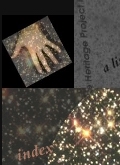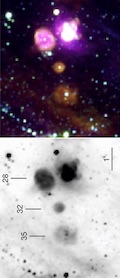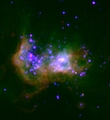



The Survey for Ionization in Neutral-Gas Galaxies: III. Diffuse, Warm Ionized Medium and Escape of Ionizing Radiation
M.S. Oey, G.R. Meurer, S. Yelda, E.J. Furst, S.M. Caballero-Nieves, D.J. Hanish, E.M. Levesque, D.A. Thilker, G.L. Walth, and the SINGG TeamWe use the first data release from the SINGG H-alpha survey of HI-selected galaxies to study the quantitative behavior of the diffuse, warm ionized medium (WIM) across the range of properties represented by these 109 galaxies. The mean fraction f_WIM of diffuse ionized gas in this sample is 0.59+/- 0.19, slightly higher than found in previous samples. Since lower surface-brightness galaxies tend to have higher f_WIM, we believe that most of this difference is due to selection effects favoring large, optically-bright, nearby galaxies with high star-formation rates. As found in previous studies, there is no appreciable correlation with Hubble type or total star-formation rate. However, we find that starburst galaxies, defined here by an H-alpha surface brightness > 2.5e+39 erg s-1 kpc-2 within the H-alpha half-light radius, do show much lower fractions of diffuse H-alpha emission. The cause apparently is not dominated by a lower fraction of field OB stars. However, it is qualitatively consistent with an expected escape of ionizing radiation above a threshold star-formation rate, predicted from our model in which the ISM is shredded by pressure-driven supernova feedback. The HI gas fractions in the starburst galaxies are also lower, suggesting that the starbursts are consuming and ionizing all the gas, and thus promoting regions of density-bounded ionization. If true, these effects imply that some amount of Lyman continuum radiation is escaping from most starburst galaxies, and that WIM properties and outflows from mechanical feedback are likely to be pressure-driven. However, in view of previous studies showing that the escape fraction of ionizing radiation is generally low, it is likely that other factors also drive the low fractions of diffuse ionized gas in starbursts. ApJ 661, 801
|

